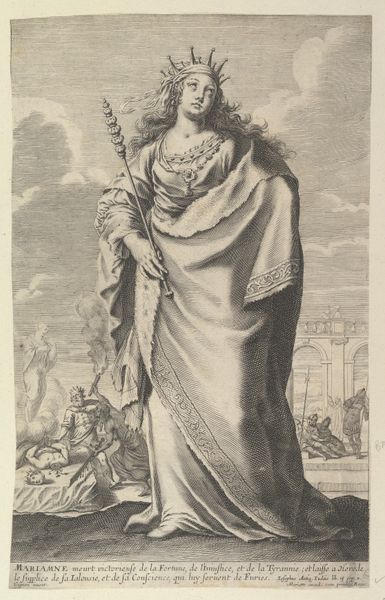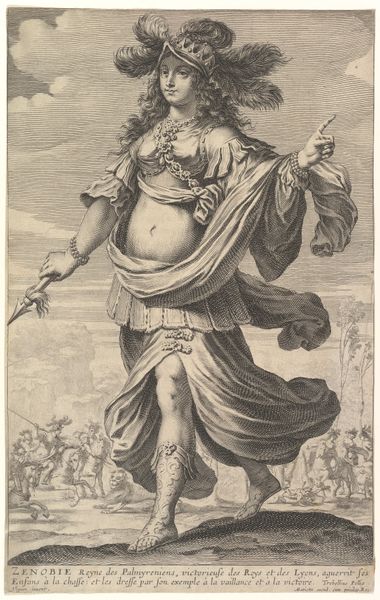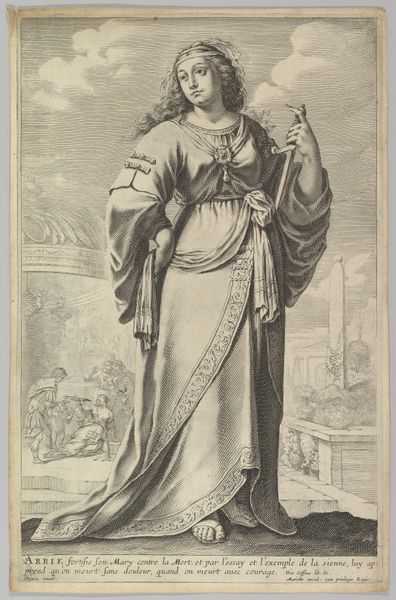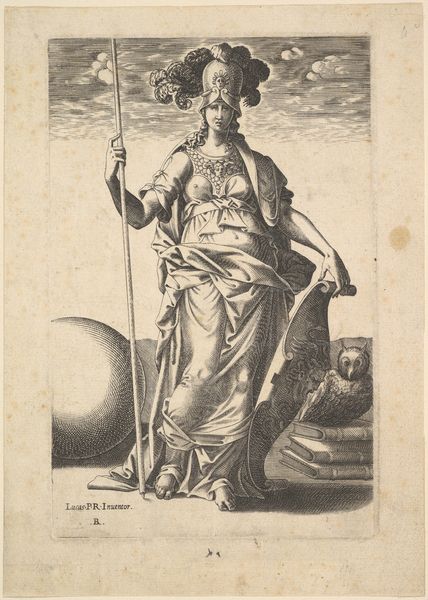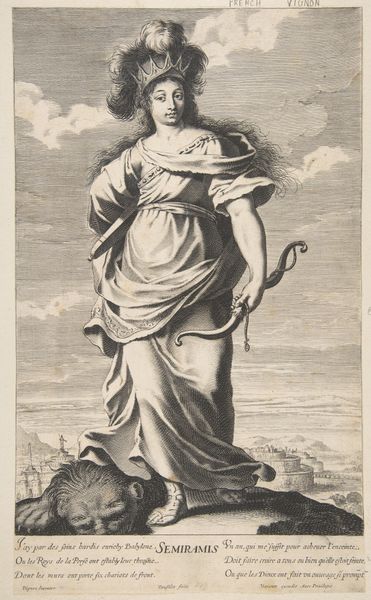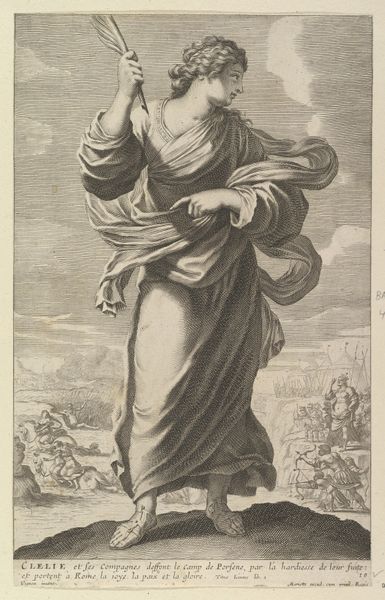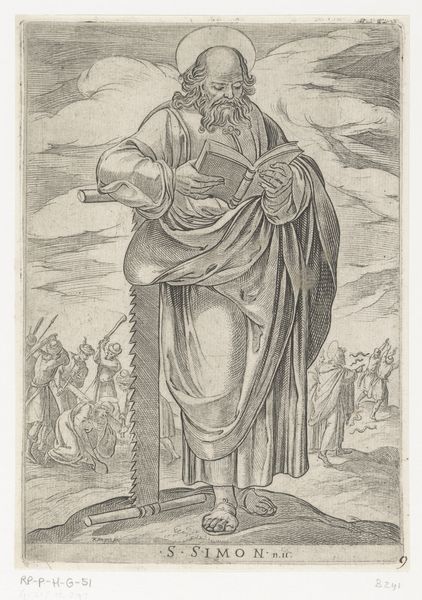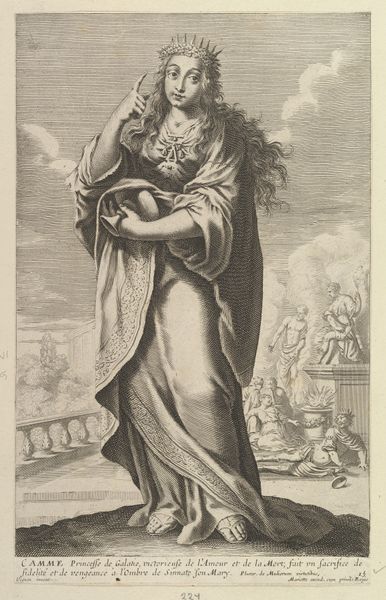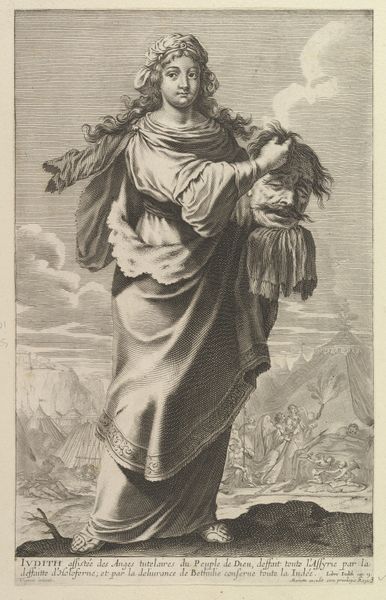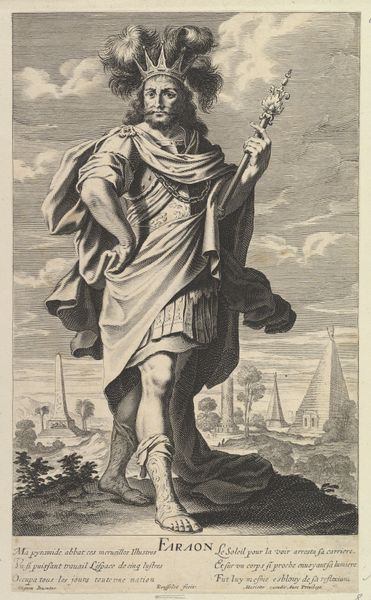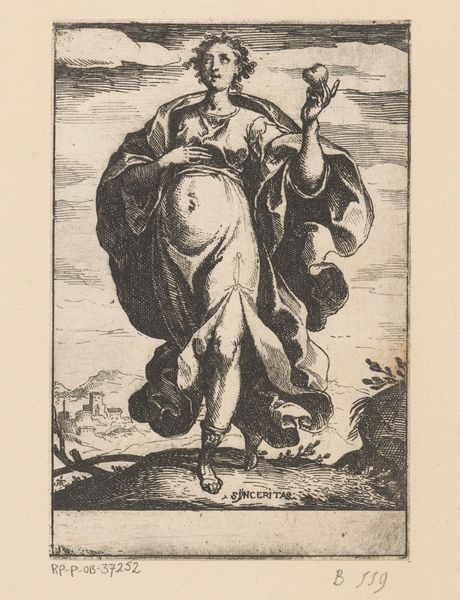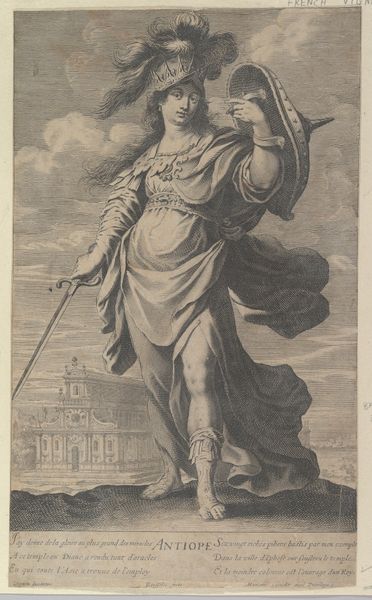
drawing, print, engraving
#
portrait
#
drawing
#
baroque
# print
#
old engraving style
#
caricature
#
figuration
#
portrait reference
#
history-painting
#
engraving
Dimensions: sheet: 13 3/8 x 8 7/16 in. (33.9 x 21.4 cm)
Copyright: Public Domain
Editor: We’re looking at “Porcie,” a 1647 engraving by Gilles Rousselet, currently housed in the Metropolitan Museum of Art. The figure has a sort of tragic grandeur. How do you interpret this work? Curator: It's a fascinating piece! Consider the context. Porcia Catonis was known for her strength, choosing a painful death by swallowing hot coals rather than live without her husband after his assassination. The inscription seems to emphasize her boldness. Does the print challenge or reinforce existing societal power dynamics, in your opinion? Editor: Well, her choice is definitely presented as noble, but… painful, and kind of extreme. Is it celebrating female agency, or using a woman’s suffering to glorify male political struggles? Curator: Exactly. Think about the visual language: the classical drapery, referencing ancient Rome; her strong stance, yet also, a somewhat passive expression. Is Rousselet celebrating her individual act of defiance, or is he participating in a broader historical narrative that uses female bodies as symbols within patriarchal power structures? How do we reconcile that she dies following the death of her husband and father, Cato? Editor: I see what you mean. It's complicated. She's clearly presented as powerful, but the *reason* for her power, her story, is intrinsically tied to the men in her life and political events. Curator: And the male gaze is embedded into so much art from this era. Ultimately, how can we view her agency within this work without reducing her to a footnote in someone else's story? Editor: It makes me think about how historical events are often selectively retold, especially stories of women. It definitely adds a layer of complexity. Curator: Agreed. Contextualizing within cultural narratives forces us to reconsider what we thought we knew. Thanks for this insightful analysis.
Comments
No comments
Be the first to comment and join the conversation on the ultimate creative platform.
